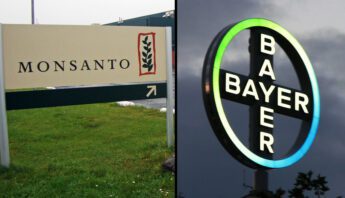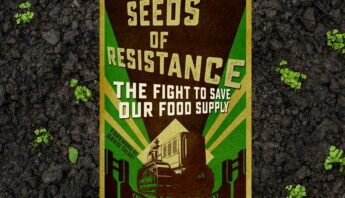Monsanto has really been on a roll lately — with the company’s new pesticide-intensive genetically engineered (GE) crop system being approved, Obama gaining Fast Track Authority for the TPP, and the introduction of an even scarier version of the “DARK Act” to block GE labeling.
But just when we thought Monsanto was as big and bad as it could be, the agricultural giant out-Monsanto’s itself. In case you missed the news, Monsanto, the largest seed company in the world, is putting in aggressive offers to acquire Syngenta, the largest pesticide company in the world. Because global domination of just one market is never enough.
The agricultural seed and chemical industry is already highly concentrated, controlled by a cartel of just six companies (that we commonly refer to as the Big 6). Despite already teetering on the edge of anti-trust intervention from the Department of Justice, Monsanto is making bold moves to become the indisputable king of the hill.
This likely merger would create an agricultural behemoth — and could spell very bad news for farmers and consumers alike.
Who doesn’t love a cartel?
Monsanto is working overtime to convince farmers that this merger would benefit them. The company is promising that a bigger company means more R&D dollars, which means even better GE and chemical products for the market.
But many farmers are wary that less competition will mean higher prices on seeds and other inputs. And those are not baseless concerns. According to USDA’s Economic Research service, seed costs for corn and soy increased 259 and 325 percent, respectively, between 1995 and 2011 — a time of extreme consolidation in the agricultural market.
This is why the National Farmers Union has already voiced strong opposition to a Monsanto-Syngenta merger:
“Agriculture has faced a concentration of economic power during the past 30 years and such a merger would be another step in that direction. The new entity created by this merger would dwarf other agribusinesses and eliminate a competitor in the marketplace, potentially resulting in an increase in price for seeds and other inputs.”
A bigger Monsanto would also mean a bigger Monsanto PR and lobbying machine. The company already spends massive amounts to portray itself as a friend to farmers and a foe to world hunger.
At the same time, Monsanto is lobbying to weaken regulations that protect human health, and suppressing independant research on its products by explicitly banning external review in licensing agreements. As a result, Monsanto’s claims about higher yields and pesticide reduction are very difficult to challenge through independent science.
GE seeds = pesticides
The one small silver lining of this potential merger is that it makes it even more clear that GE seeds and pesticides go hand-in-hand. For decades, Monsanto has been promising that its GE technology will lead to a reduction in pesticide use. And despite overwhelming evidence to the contrary, this continues to be Monsanto’s talking point.
But, as Tom Philpott said in his Mother Jones article,
“In trying to swallow Syngenta, Monsanto is putting its money where its mouth isn’t — that is, it’s contradicting years of rhetoric about how its ultimate goal with biotech is to wean farmers off agrichemicals.”
If Monsanto was serious about the future of farming being less dependent on chemicals, it certainly wouldn’t be dropping the big bucks to acquire the largest pesticide company in the world.
Mongenta? Synsanto?
What is the price tag on the world’s largest pesticide company? It’s somewhere above $45 billion. That was Monsanto’s latest offer to Syngenta.
So far Syngenta executives have publicly scoffed at Monsanto’s attempts to buy the company, but Monsanto Chief Executive Hugh Grant still believes the merger will happen, and apparently the stock market agrees with him (Syngenta’s stock has remained high ever since the first offer). Monsanto has even sweetened the deal with a reverse breakup fee — if anti-trust regulations stand in the way of the merger, Syngenta gets to walk away with a tidy $2 billion.
Here’s the kicker: Monsanto would get to change its name.
Monsanto knows full well that it would have to break up pieces of the two companies, likely selling part or all of Monsanto’s chemical divisions and Syngenta’s seed divisions. But the deal would still create an agricultural giant — and a few interesting bonuses for Monsanto. The company would move its headquarters to the UK to pay lower taxes (despite the fact that several of Syngenta’s best selling products, like atrazine and neonicotinoids, are banned in Europe).
And here’s the kicker: Monsanto would get to change its name.
Monsanto is among the most-hated corporations of our time, so it’s not surprising that it has offered to change its name post-merger. Whether it’s switching to Syngenta or coming up with a new name altogether, the agricultural giant is ready to ditch all the public relations baggage that comes with being “Monsanto.” But you can’t fool us, Monsanto. We will not forget your misdeeds because of a name change. Monsanto, by any other name, would smell as foul.
We’ll keep you posted on the merger. In the meantime, let’s keep the pressure on Congress to reject the DARK Act — another enormous power grab for Monsanto and friends.








